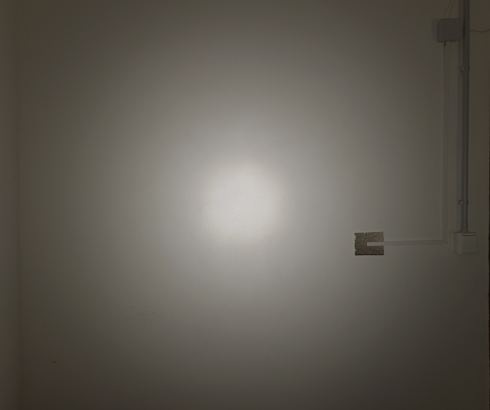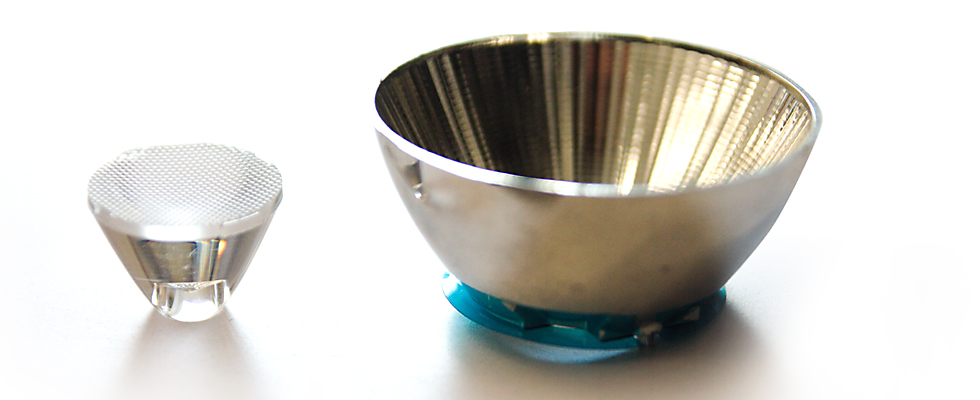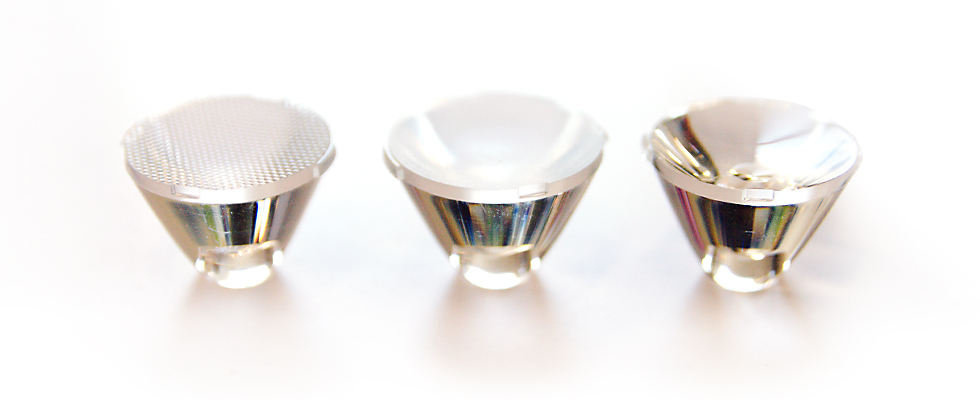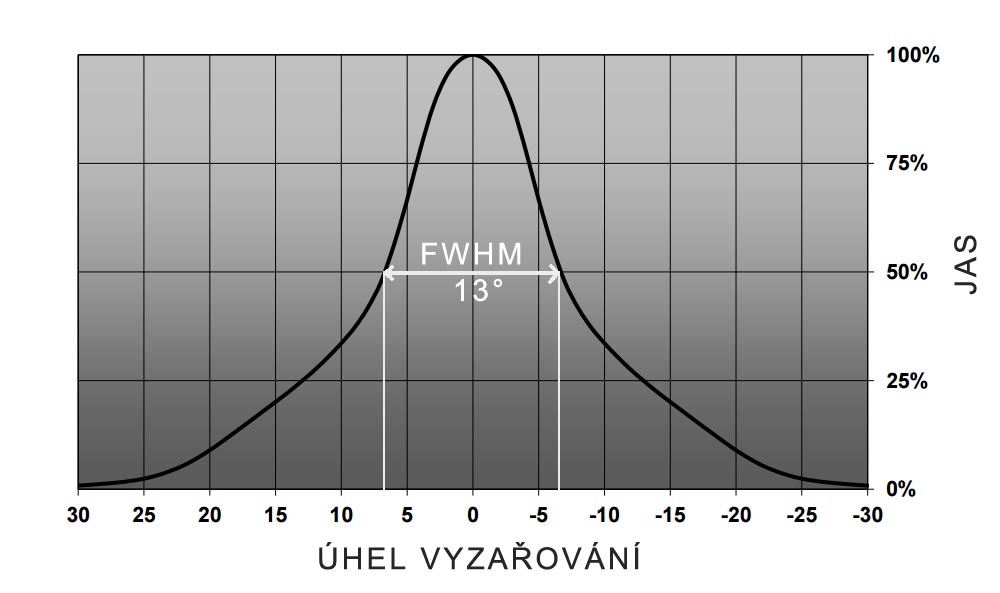Optics and reflectors

General about light direction
Each LED has a PMMA optic in front of it that defines the width of the light. Without this, the LED would shine at an impractically wide angle of 115° or 125°. TIR optics have high optical transparency, are lightweight and allow you to combine two different angles (e.g. 13° and 29° in our case) for good range and peripheral illumination.
Optics or reflectors
We use only modern TIR optics in our Lucifer headlamps. We do not use reflectors. TIR (Total Internal Reflection) optics are smaller and more efficient and have a better light cone. The transparent "lens" is not glass as you might think, but is either PMMA or PC (polycarbonate). Not to worry, both are tough plastics that will last. The lenses have higher light routing efficiency - less loss at transitions. Their resulting cone is very pleasing, smooth with no sharp transitions or artifacts.

We use three spatially identical optics in our headlamps, each with a different beam angle, which can be freely combined. These three optics have a beam angle (FWHM) of 13°, 20° and 29° respectively. For convenience, we give recommendations on which combinations are suitable for which activities.

The combination of optics with different angles brings great comfort, the headlamp has both a large range and wide peripheral illumination. >Even the narrowest 13° optic provides some peripheral illumination, and it is never a "thrower" type of light (ultra narrow search cone). We sell 13°+13° combinations once in a while, but the vast majority of our customers choose the recommended 13°+20° and 13°+29° optics, which are truly suitable for all sporting and non-sporting activities.
FWHM - angle optics
LEDs produce light at an angle of 125° and optics are required to focus them, narrowing them. We specify the angle of the optics as FWHM (Full Width at Half Maximum) and this refers to the width of the cone into which most of the light from the LED is directed. Since it is difficult to measure the exact edge of the light, the cone angle is measured as the angle at which the brightness of the light is at least half the maximum brightness (the brightness at the midpoint). The figure shows an example of an optic with an FWHM of 13°.
In general, we recommend a combination of 13°+20° optics. Wider combinations (13°+29°, 20°+29°) are suitable for work. Some orienteers also use 13°+29° optics to peripherally illuminate their map and not overlight it with a strong center light. 
Replacement optics, replacement frames
It is not often, practically not at all, that the configuration needs to be changed or the scopes are damaged. The optics cannot be replaced individually, they are sealed in the frames and the entire aluminum frame with optics is always replaced. This can be purchased from us as a replacement. We recommend that you follow the information on our website for clear information when making your selection. Alternatively, please consult the selection with us by phone. The differences between some combinations of optics are not large, e.g. between 13°+20° and 13°+29°. There is only a significant difference between 13°+20° and 20°+20° optics.